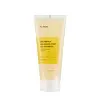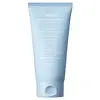What's inside
What's inside
 Key Ingredients
Key Ingredients

 Benefits
Benefits

 Concerns
Concerns

No concerns
 Ingredients Side-by-side
Ingredients Side-by-side

Water
Skin ConditioningSodium C14-16 Olefin Sulfonate
CleansingGlycerin
HumectantCocamidopropyl Hydroxysultaine
CleansingSodium Cocoyl Glycinate
CleansingAcrylates Copolymer
Lauryl Glucoside
CleansingPropylene Glycol Laurate
Skin ConditioningCalendula Officinalis Flower Extract
MaskingCalendula Officinalis Flower
Skin ConditioningLactobacillus/Hibiscus Sabdariffa Flower Ferment Filtrate
Skin ConditioningChamaecyparis Obtusa Leaf Extract
Skin ConditioningMelaleuca Alternifolia Leaf Extract
PerfumingMentha Suaveolens Leaf Extract
AstringentTrifolium Pratense Extract
Skin ConditioningCentella Asiatica Extract
CleansingBeta-Glucan
Skin ConditioningRosmarinus Officinalis Extract
AntimicrobialSolanum Lycopersicum Fruit Extract
AntioxidantCoffea Arabica Seed Extract
MaskingSerenoa Serrulata Fruit Extract
Skin ConditioningMalus Domestica Fruit Extract
AntioxidantMentha Rotundifolia Leaf Extract
TonicCamellia Sinensis Leaf Extract
AntimicrobialThymus Vulgaris Leaf Extract
Skin ProtectingCynanchum Atratum Extract
Skin ConditioningHyaluronic Acid
HumectantHydrolyzed Hyaluronic Acid
HumectantHydrolyzed Sodium Hyaluronate
Skin ConditioningHydroxypropyltrimonium Hyaluronate
Potassium Hyaluronate
Skin ConditioningSodium Hyaluronate Crosspolymer
HumectantSodium Acetylated Hyaluronate
HumectantDecyl Glucoside
CleansingMethylpropanediol
Solvent1,2-Hexanediol
Skin ConditioningCoco-Glucoside
CleansingSodium Chloride
MaskingTromethamine
BufferingCitric Acid
BufferingPanthenol
Skin ConditioningCaprylhydroxamic Acid
Ethylhexylglycerin
Skin ConditioningAllantoin
Skin ConditioningDisodium EDTA
Pentylene Glycol
Skin ConditioningPropanediol
SolventButylene Glycol
HumectantEctoin
Skin ConditioningAcacia Senegal Gum
MaskingLactic Acid
BufferingSalicylic Acid
MaskingGluconolactone
Skin ConditioningGlycolipids
Skin ConditioningCaprylic/Capric Triglyceride
MaskingTocopherol
AntioxidantAscorbic Acid
AntioxidantSodium Carbonate
BufferingSodium Hyaluronate
HumectantCapryloyl Salicylic Acid
ExfoliatingXanthophylls
Skin ConditioningWater, Sodium C14-16 Olefin Sulfonate, Glycerin, Cocamidopropyl Hydroxysultaine, Sodium Cocoyl Glycinate, Acrylates Copolymer, Lauryl Glucoside, Propylene Glycol Laurate, Calendula Officinalis Flower Extract, Calendula Officinalis Flower, Lactobacillus/Hibiscus Sabdariffa Flower Ferment Filtrate, Chamaecyparis Obtusa Leaf Extract, Melaleuca Alternifolia Leaf Extract, Mentha Suaveolens Leaf Extract, Trifolium Pratense Extract, Centella Asiatica Extract, Beta-Glucan, Rosmarinus Officinalis Extract, Solanum Lycopersicum Fruit Extract, Coffea Arabica Seed Extract, Serenoa Serrulata Fruit Extract, Malus Domestica Fruit Extract, Mentha Rotundifolia Leaf Extract, Camellia Sinensis Leaf Extract, Thymus Vulgaris Leaf Extract, Cynanchum Atratum Extract, Hyaluronic Acid, Hydrolyzed Hyaluronic Acid, Hydrolyzed Sodium Hyaluronate, Hydroxypropyltrimonium Hyaluronate, Potassium Hyaluronate, Sodium Hyaluronate Crosspolymer, Sodium Acetylated Hyaluronate, Decyl Glucoside, Methylpropanediol, 1,2-Hexanediol, Coco-Glucoside, Sodium Chloride, Tromethamine, Citric Acid, Panthenol, Caprylhydroxamic Acid, Ethylhexylglycerin, Allantoin, Disodium EDTA, Pentylene Glycol, Propanediol, Butylene Glycol, Ectoin, Acacia Senegal Gum, Lactic Acid, Salicylic Acid, Gluconolactone, Glycolipids, Caprylic/Capric Triglyceride, Tocopherol, Ascorbic Acid, Sodium Carbonate, Sodium Hyaluronate, Capryloyl Salicylic Acid, Xanthophylls
Water
Skin ConditioningGlycerin
HumectantHydrogenated Palm Acid
Potassium Hydroxide
BufferingPotassium Cocoyl Glycinate
Sedum Sarmentosum Extract
HumectantSodium Hyaluronate
HumectantHydroxypropyltrimonium Hyaluronate
Sodium Acetylated Hyaluronate
HumectantHydrolyzed Hyaluronic Acid
HumectantHyaluronic Acid
HumectantGlyceryl Stearate
EmollientPolyquaternium-7
Acrylates/C10-30 Alkyl Acrylate Crosspolymer
Emulsion StabilisingSodium Phytate
1,2-Hexanediol
Skin ConditioningAllantoin
Skin ConditioningPanthenol
Skin ConditioningSodium Bicarbonate
AbrasiveButylene Glycol
HumectantGlycine
BufferingSerine
MaskingGlutamic Acid
HumectantAspartic Acid
MaskingLeucine
Skin ConditioningAlanine
MaskingLysine
Skin ConditioningHydrolyzed Sodium Hyaluronate
Skin ConditioningSodium Hyaluronate Crosspolymer
HumectantArginine
MaskingTyrosine
MaskingPhenylalanine
MaskingProline
Skin ConditioningThreonine
Valine
MaskingIsoleucine
Skin ConditioningHistidine
HumectantCysteine
AntioxidantMethionine
Skin ConditioningPotassium Hyaluronate
Skin ConditioningSodium Benzoate
MaskingWater, Glycerin, Hydrogenated Palm Acid, Potassium Hydroxide, Potassium Cocoyl Glycinate, Sedum Sarmentosum Extract, Sodium Hyaluronate, Hydroxypropyltrimonium Hyaluronate, Sodium Acetylated Hyaluronate, Hydrolyzed Hyaluronic Acid, Hyaluronic Acid, Glyceryl Stearate, Polyquaternium-7, Acrylates/C10-30 Alkyl Acrylate Crosspolymer, Sodium Phytate, 1,2-Hexanediol, Allantoin, Panthenol, Sodium Bicarbonate, Butylene Glycol, Glycine, Serine, Glutamic Acid, Aspartic Acid, Leucine, Alanine, Lysine, Hydrolyzed Sodium Hyaluronate, Sodium Hyaluronate Crosspolymer, Arginine, Tyrosine, Phenylalanine, Proline, Threonine, Valine, Isoleucine, Histidine, Cysteine, Methionine, Potassium Hyaluronate, Sodium Benzoate
 Reviews
Reviews

Ingredients Explained
These ingredients are found in both products.
Ingredients higher up in an ingredient list are typically present in a larger amount.
1,2-Hexanediol is a synthetic liquid and another multi-functional powerhouse.
It is a:
- Humectant, drawing moisture into the skin
- Emollient, helping to soften skin
- Solvent, dispersing and stabilizing formulas
- Preservative booster, enhancing the antimicrobial activity of other preservatives
Allantoin is a soothing ingredient known for its protective and moisturizingg properties. Because of this, it is often added to products with strong active ingredients.
Studies show higher concentrations of this ingredient can promote wound healing.
Though it can be derived from the comfrey plant, allantoin is produced synthetically for cosmetic products to ensure purity.
Learn more about AllantoinButylene Glycol (or BG) is used within cosmetic products for a few different reasons:
Overall, Butylene Glycol is a safe and well-rounded ingredient that works well with other ingredients.
Though this ingredient works well with most skin types, some people with sensitive skin may experience a reaction such as allergic rashes, closed comedones, or itchiness.
Learn more about Butylene GlycolGlycerin is already naturally found in your skin. It helps moisturize and protect your skin.
A study from 2016 found glycerin to be more effective as a humectant than AHAs and hyaluronic acid.
As a humectant, it helps the skin stay hydrated by pulling moisture to your skin. The low molecular weight of glycerin allows it to pull moisture into the deeper layers of your skin.
Hydrated skin improves your skin barrier; Your skin barrier helps protect against irritants and bacteria.
Glycerin has also been found to have antimicrobial and antiviral properties. Due to these properties, glycerin is often used in wound and burn treatments.
In cosmetics, glycerin is usually derived from plants such as soybean or palm. However, it can also be sourced from animals, such as tallow or animal fat.
This ingredient is organic, colorless, odorless, and non-toxic.
Glycerin is the name for this ingredient in American English. British English uses Glycerol/Glycerine.
Learn more about GlycerinHyaluronic acid is naturally found in healthy skin. It is a humectant, meaning it draws moisture to your skin.
This ingredient helps hydrate, soothe, and protect the skin.
What makes hyaluronic acid so hydrating? It has the capacity to bind or hold large amounts of water.
Fun fact: It is already naturally found in our bodies, such as the fluids of our eyes and our joints.
Studies find this ingredient to have anti-inflammatory and anti-microbial properties. This can help speed up wound-healing.
Hyaluronic acid can be irritating if the molecule has a low-molecular weight, or if the molecules are small.
One study found low-molecular weight hyaluronic acid to be pro-inflammatory, meaning some people may experience irritation. This is because our bodies use hyaluronic acid in the wound-healing process to signal to our bodies, via irritation, that something needs healing.
The same study found high-molecular weight hyaluronic acid to be anti-inflammatory.
These are some other common types of Hyaluronic Acid:
Learn more about Hyaluronic AcidHydrolyzed Hyaluronic Acid is a form of hyaluronic acid. It is created by the hydrolysis of hyaluronic acid with a high molecular weight. Once created, Hydrolyzed Hyaluronic Acid has a low molecular weight.
Low molecular weight HA has been shown to hydrate and increase elasticity of the skin. Increasing elasticity is also associated with reduction of wrinkle depth.
One study found topical low molecular weight hyaluronic acid may be considered for the treatment of rosacea in the adult population. However, we always recommend speaking with a professional about your skin concerns.
Hyaluronic acids are a humectant. This means they draw moisture from the air. Hyaluronic acids help moisturize, soothe, and protect the skin.
Read more about other common forms of hyaluronic acid:
Learn more about Hydrolyzed Hyaluronic AcidThis ingredient is created by putting sodium hyaluronate through hydrolysis.
You might know this as 'mini' or 'ultra low-molecular weight' hyaluronic acid. The small molecule size means it is able to travel deeper in the skin.
According to studies, low molecular-weight hyaluronic acid can:
One study from 2011 found ultra-low weight HA to show pro-inflammatory properties. Another study from 2022 found it to downregulate UV-B induced inflammation.
Hydrolysis is a process of changing a molecule using water or enzymes.
This ingredient is water-soluble.
Learn more about Hydrolyzed Sodium HyaluronateThis form of hyaluronic acid is produced through fermentation.
According to a manufacturer, it has a positive charge by ionic binding to help moisturize and give hair a smooth feel. This is why you'll find this ingredient in shampoos and body washes.
Panthenol is a common ingredient that helps hydrate and soothe the skin. It is found naturally in our skin and hair.
There are two forms of panthenol: D and L.
D-panthenol is also known as dexpanthenol. Most cosmetics use dexpanthenol or a mixture of D and L-panthenol.
Panthenol is famous due to its ability to go deeper into the skin's layers. Using this ingredient has numerous pros (and no cons):
Like hyaluronic acid, panthenol is a humectant. Humectants are able to bind and hold large amounts of water to keep skin hydrated.
This ingredient works well for wound healing. It works by increasing tissue in the wound and helps close open wounds.
Once oxidized, panthenol converts to pantothenic acid. Panthothenic acid is found in all living cells.
This ingredient is also referred to as pro-vitamin B5.
Learn more about PanthenolPotassium hyaluronate (PH) is a salt form of hyaluronic acid and has similar skin hydrating benefits.
Similar to hyaluronic acid, PH is able to draw and hold moisture to your skin. This helps keep skin soft and hydrated.
Fun fact: PH is used in eye drops and injectable treatments for joint disorders. It has lubricating and tissue-repair properties.
Learn more about Potassium HyaluronateSodium Acetylated Hyaluronate is a type of Hyaluronic Acid.
Hyaluronic Acids help moisturize, soothe, and protect the skin.
Read about common types of Hyaluronic Acid here:
Sodium Hyaluronate
Hydrolyzed Hyaluronic Acid
Hyaluronic Acid
Sodium Hyaluronate is hyaluronic acid's salt form. It is commonly derived from the sodium salt of hyaluronic acid.
Like hyaluronic acid, it is great at holding water and acts as a humectant. This makes it a great skin hydrating ingredient.
Sodium Hyaluronate is naturally occurring in our bodies and is mostly found in eye fluid and joints.
These are some other common types of Hyaluronic Acid:
Learn more about Sodium HyaluronateSodium Hyaluronate Crosspolymer is a type of hyaluronic acid. In fact, it is modified version of hyaluronic acid.
The structure of Sodium Hyaluronate Crosspolymer allows it to stay in the skin's top layer for a longer period of time. This allows for even more hydration and humectant action than hyaluronic acid.
These are some other common types of Hyaluronic Acid:
Learn more about Sodium Hyaluronate CrosspolymerWater. It's the most common cosmetic ingredient of all. You'll usually see it at the top of ingredient lists, meaning that it makes up the largest part of the product.
So why is it so popular? Water most often acts as a solvent - this means that it helps dissolve other ingredients into the formulation.
You'll also recognize water as that liquid we all need to stay alive. If you see this, drink a glass of water. Stay hydrated!
Learn more about Water